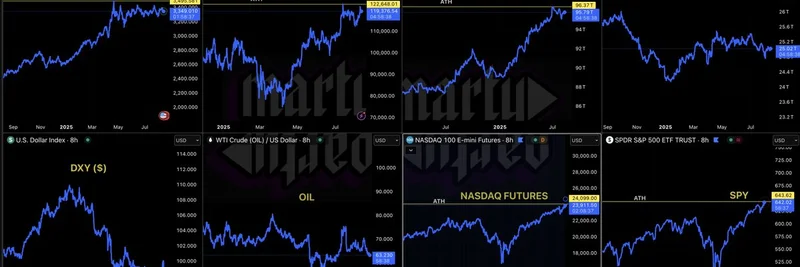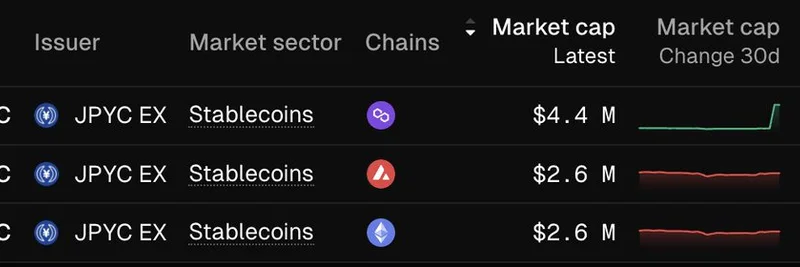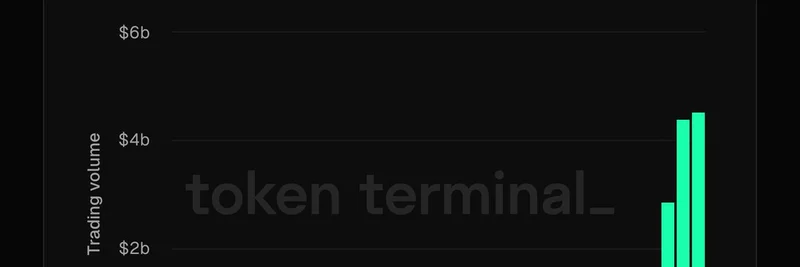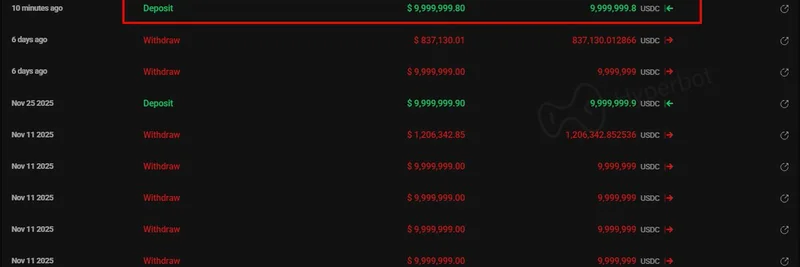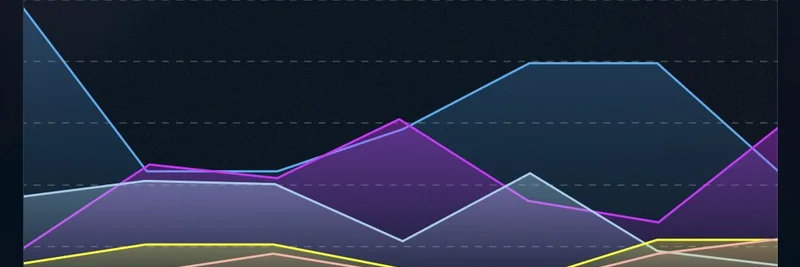In the fast-paced world of crypto, staying ahead means keeping an eye on the bigger picture. That's where macro overviews come in handy, especially when they're shared by sharp analysts like MartyParty on X. His recent post from August 12, 2025, gives us a snapshot of key market indicators, highlighting some intriguing divergences that could spell opportunities—or risks—for meme token enthusiasts.
MartyParty, a well-known crypto commentator and macro analyst, posted a collage of charts showing the performance of various assets over recent months. Let's break it down step by step, explaining what each means and how it ties into the meme coin space.
Key Highlights from the Charts
Starting with Gold and Bitcoin, both are showing downward trends. Gold, often seen as a safe-haven asset, has dipped from its all-time highs, while Bitcoin—the king of crypto—has followed suit, sliding below $60,000 recently. For meme tokens, which often ride Bitcoin's coattails, this could mean increased volatility. Think about it: when BTC dips, altcoins and memes like Dogecoin or Pepe can amplify those moves, either crashing harder or bouncing back stronger if sentiment shifts.
Next up, Global Liquidity and Global Central Bank Balance Sheets. Liquidity refers to the amount of money sloshing around in the financial system, often pumped in by central banks through policies like quantitative easing. The charts show a peak followed by a pullback, suggesting that the easy money era might be tightening. Central bank balance sheets, which expand when they buy assets to support economies, are also contracting. This contraction can lead to higher interest rates and less risk-taking, which isn't great news for speculative assets like meme coins. If liquidity dries up, meme token pumps might become rarer, as traders pull back from high-risk plays.
On the flip side, the US Dollar Index (DXY) is climbing. A stronger dollar typically makes commodities and crypto more expensive for international buyers, putting downward pressure on prices. Oil is mirroring this with its own decline, reflecting broader economic concerns like slowing demand. For blockchain practitioners dabbling in meme tokens, a strong dollar could mean foreign investors hesitate, reducing the global hype that often fuels meme coin rallies.
But here's the twist: Traditional markets are thriving. Nasdaq Futures and the SPDR S&P 500 ETF Trust (SPY) are at all-time highs, as MartyParty notes. This divergence—stocks up, crypto down—suggests a rotation out of riskier assets like Bitcoin and into more "stable" equities. However, in the meme world, this could create crossover opportunities. Meme tokens inspired by tech or AI themes might benefit if Nasdaq's bull run spills over, especially with blockchain integrations gaining traction.
Implications for Meme Tokens
So, what does all this mean for your favorite meme coins? Meme tokens thrive on narrative, community, and market sentiment, but they're not immune to macro forces. With US markets at peaks and crypto lagging, we might be in a "risk-off" phase where investors flock to safer bets. This could pressure meme token prices in the short term, but it also sets the stage for explosive rebounds if liquidity returns or if positive news—like regulatory approvals or celebrity endorsements—hits.
For instance, if central banks pivot back to easing (think rate cuts), that could reignite the bull market for Bitcoin and, by extension, memes. Keep an eye on upcoming economic data releases, such as inflation reports or Fed meetings, which could sway these trends.
MartyParty's overview is a reminder that meme tokens aren't just about fun and games—they're intertwined with global finance. If you're building or trading in the blockchain space, tools like this analysis can help you time your moves better. Follow MartyParty on X for more insights, and stay tuned to Meme Insider for the latest on how macro shifts affect your portfolio.
Whether you're a seasoned trader or just dipping your toes into meme coins, understanding these charts can give you an edge. What's your take on this divergence? Share in the comments below!
